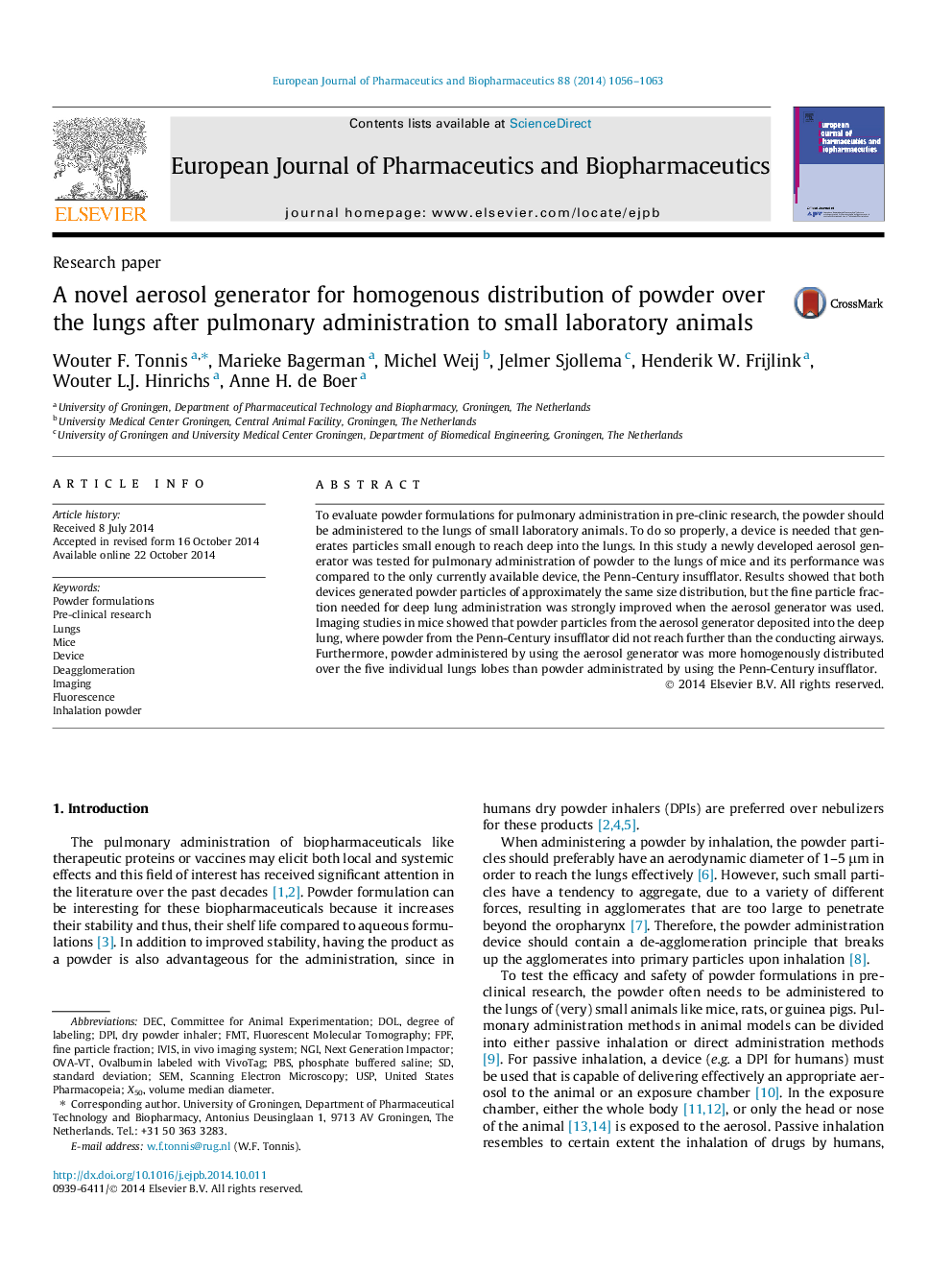| Article ID | Journal | Published Year | Pages | File Type |
|---|---|---|---|---|
| 2083543 | European Journal of Pharmaceutics and Biopharmaceutics | 2014 | 8 Pages |
•We compared the Penn-Century DP-4M® to a newly developed aerosol generator.•The fine particle fraction of the powder was higher with the aerosol generator.•Powder particles dispersed by the aerosol generator reached the deep lung.•The distribution over the lungs was more homogenous with the aerosol generator.
To evaluate powder formulations for pulmonary administration in pre-clinic research, the powder should be administered to the lungs of small laboratory animals. To do so properly, a device is needed that generates particles small enough to reach deep into the lungs. In this study a newly developed aerosol generator was tested for pulmonary administration of powder to the lungs of mice and its performance was compared to the only currently available device, the Penn-Century insufflator. Results showed that both devices generated powder particles of approximately the same size distribution, but the fine particle fraction needed for deep lung administration was strongly improved when the aerosol generator was used. Imaging studies in mice showed that powder particles from the aerosol generator deposited into the deep lung, where powder from the Penn-Century insufflator did not reach further than the conducting airways. Furthermore, powder administered by using the aerosol generator was more homogenously distributed over the five individual lungs lobes than powder administrated by using the Penn-Century insufflator.
Graphical abstractFigure optionsDownload full-size imageDownload high-quality image (93 K)Download as PowerPoint slide
